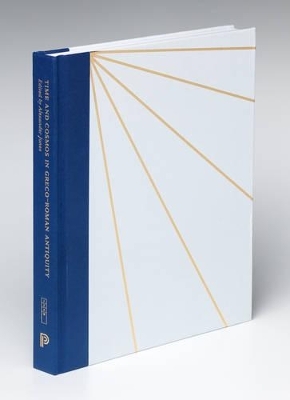
Time and Cosmos in Greco-Roman Antiquity
Princeton University Press (Verlag)
978-0-691-17440-2 (ISBN)
The Greeks and Romans lived according to a distinctively Hellenic conception of time as an aspect of cosmic order and regularity. Appropriating ideas from Egypt and the Near East, the Greeks integrated them into a cosmological framework governed by mathematics and linking the cycles of the heavenly bodies to the human environment. From their cosmology they derived instruments for measuring and tracking the passage of time that were sophisticated embodiments of scientific reasoning and technical craft, meant not solely for the study of specialists and connoisseurs but for the public gaze. Time and Cosmos in Greco-Roman Antiquity, the accompanying catalogue for the exhibition at the Institute for the Study of the Ancient World, New York University, explores through thematic essays and beautiful illustrations the practical as well as the artistic, ideological, and spiritual role of time technology and time imagery in the Mediterranean civilizations.
Highlights among the more than one hundred objects from the exhibition include marvelously inventive sundials and portable timekeeping devices, stone and ceramic calendars, zodiac boards for displaying horoscopes, and mosaics, sculptures, and coins that reflect ancient perceptions of the controlling power of time and the heavens. Contributors include James Evans, Dorian Gieseler Greenbaum, Stephan Heilen, Alexander Jones, Daryn Lehoux, Karlheinz Schaldach, John Steele, and Bernhard Weisser. Exhibition Dates: October 19, 2016-April 23, 2017 Cover photograph (c) Bruce M. White, 2016
Alexander R. Jones is professor of the history of the exact sciences in antiquity at the Institute for the Study of the Ancient World at New York University. A leading expert on ancient science, he has written many books and articles on astronomy, mathematics, and related scientific traditions in the Greco-Roman world and the ancient Near East.
Letter from ISAW 10 Acknowledgments 12 I Map: The Greco-Roman World, 500 BCE-500 CE 16 Introduction 19 Alexander Jones, Institute for the Study of the Ancient World II Near East Relations: Mesopotamia and Egypt 45 John Steele, Brown University III Measuring the Hours: Sundials, Water Clocks,and Portable Sundials 63 Karlheinz Schaldach, Independent researcher IV Days, Months, Years, and Other Time Cycles 95 Daryn Lehoux, Queen's University, Kingston V Astrology in the Greco-Roman World 123 Stephan Heilen, Universitat Osnabruck Dorian Gieseler Greenbaum, University of Wales Trinity St David VI Images of Time and Cosmic Connection 143 James Evans, University of Puget Sound VIII Imperial Imagery of Time and Comos 171 Bernhard Weisser, Munzkabinett, Staatliche Museen zu Berlin Exhibition Checklist 184 Bibliography 194 Photography and Drawing Credits 204
| Erscheinungsdatum | 08.12.2016 |
|---|---|
| Reihe/Serie | Institute for the Study of the Ancient World Exhibition Catalogs |
| Co-Autor | John Steele, Karlheinz Schaldach, Stephan Heilen, Bernhard Weisser |
| Zusatzinfo | 145 color illus. |
| Verlagsort | New Jersey |
| Sprache | englisch |
| Maße | 229 x 279 mm |
| Gewicht | 1361 g |
| Themenwelt | Geisteswissenschaften ► Archäologie |
| Geisteswissenschaften ► Philosophie ► Metaphysik / Ontologie | |
| Geisteswissenschaften ► Philosophie ► Philosophie Altertum / Antike | |
| ISBN-10 | 0-691-17440-7 / 0691174407 |
| ISBN-13 | 978-0-691-17440-2 / 9780691174402 |
| Zustand | Neuware |
| Haben Sie eine Frage zum Produkt? |
aus dem Bereich


